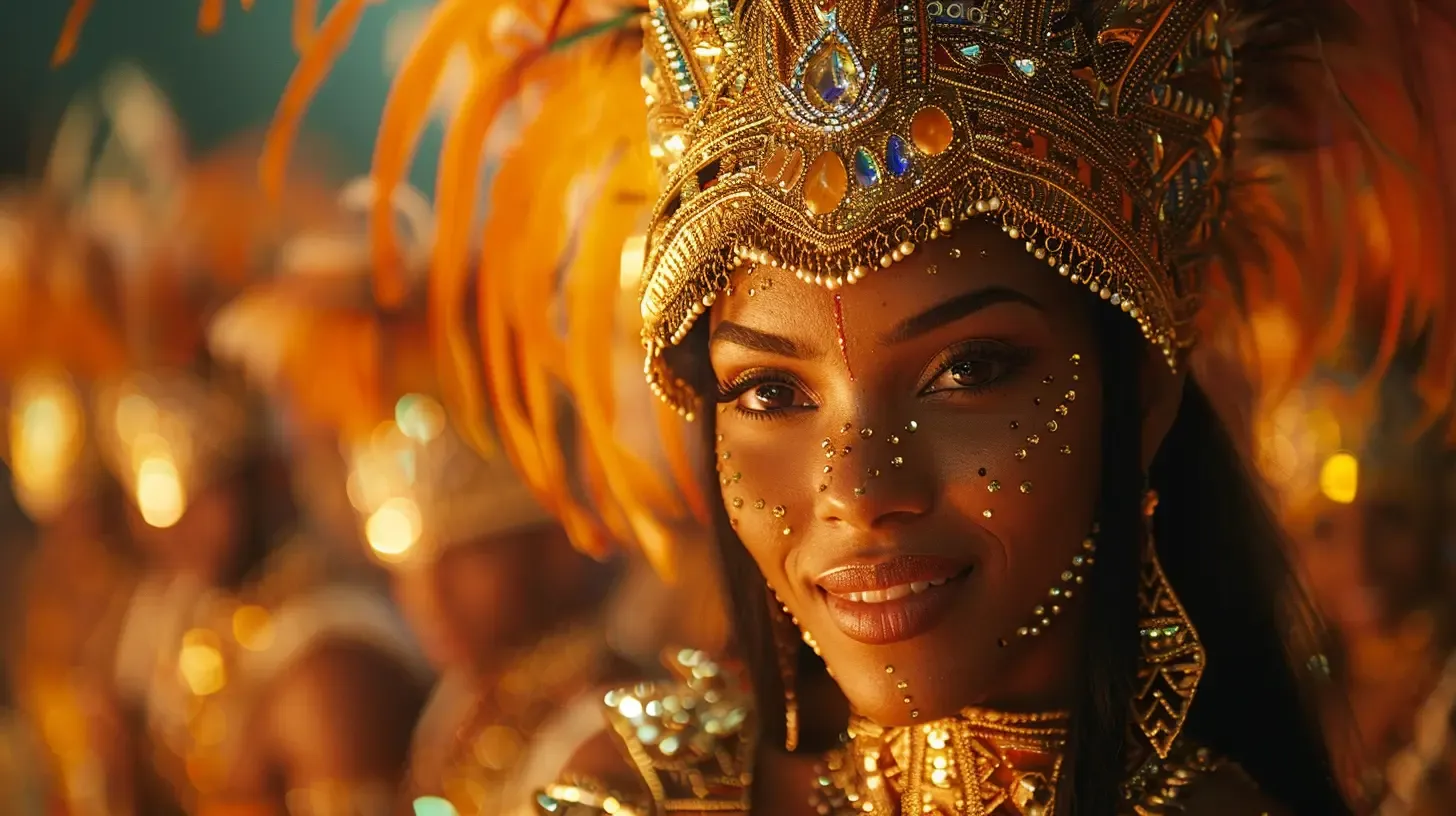28 February 2024
Brazilian Carnival Unveils a Spectacle of Culture and Celebration.

Press the play button in the top right corner to listen to the article
The Brazilian Carnival, a festivity that engulfs the nation in a whirlwind of color, rhythm, and joy, stands as a monumental event that captures the essence of Brazil's rich cultural heritage and unparalleled spirit of communal celebration. Originating from European colonial influences, the Carnival has transformed over centuries into a unique blend of indigenous, African, and Portuguese traditions, showcasing the diverse fabric of Brazilian society.
At the heart of the Carnival is the samba, a dance and musical genre that resonates with the rhythm of African drums and Portuguese melodies. The samba schools, community-based organizations that prepare year-round for the event, are pivotal in orchestrating the grandiose parades that traverse through the Sambadrome arenas, especially in Rio de Janeiro. These schools compete in a rigorous display of choreography, costumes, and floats, narrating stories that range from historical events to social and political commentary, all through the medium of samba.
Beyond the competitive parades, the Carnival is synonymous with street festivals or 'blocos,' where locals and tourists alike don the most extravagant and sometimes whimsical outfits to dance and revel in the streets. These blocos are democratic spaces where the carnival spirit permeates every corner of Brazilian cities, allowing everyone to participate regardless of social or economic status.
The Carnival also serves as a mirror reflecting Brazil's social realities and changes. Themes of racial equality, environmental conservation, and political accountability are increasingly becoming central to the celebrations, providing a platform for dialogue and awareness amidst the festivity. This evolution underscores the Carnival's role not just as an escape from reality but as a poignant commentary on Brazilian life and issues.
Despite its global appeal, the Brazilian Carnival retains its local soul, with each region adding its unique flavor to the celebration. From the axé music of Salvador to the frevo and maracatu rhythms of Recife and Olinda, the Carnival adapts to the local cultural landscape, demonstrating the vast regional diversity within Brazil.
As the world watches, the Brazilian Carnival unfolds as a testament to the country's ability to blend tradition and modernity, celebration and reflection. It stands not only as a monumental party but as a living museum of Brazilian culture and a loud, colorful plea for unity and joy in the face of life's challenges.
Samba Schools and the Pulse of Brazilian Carnival
At the core of the Brazilian Carnival's allure are the samba schools, institutions that are much more than mere clubs for music and dance enthusiasts. Originating in the early 20th century within Rio de Janeiro's marginalized communities, samba schools have evolved into pillars of the Carnival, embodying the cultural, social, and educational aspirations of their communities. These schools are the lifeblood of the Carnival parade, orchestrating elaborate performances that are the result of months of meticulous preparation and dedication.
Each samba school selects a theme or 'enredo' that guides the creation of its parade, with themes often touching on historical, cultural, or social issues. The preparation involves the entire community, from costume designers and carpenters to musicians and dancers, all contributing their skills towards the common goal of winning the competition and, more importantly, showcasing their community's talent and resilience.
The parade itself is a spectacle of creativity and precision, judged on criteria including costume, music, dance, and overall harmony. The Sambadrome, the parade's venue, becomes a battleground where schools vie for the judges' and audience's admiration, turning their performances into a vibrant display of Brazilian culture's dynamism and diversity.
Street Festivals and the Democratization of Joy
Parallel to the grandeur of samba school parades, the Carnival's street festivals or 'blocos' offer a more accessible celebration. These gatherings range from small neighborhood parties to massive street parades attracting thousands of participants. The 'blocos' are testament to the Carnival's inclusive spirit, where anyone can join the dance, regardless of background. This democratization of celebration is a key feature of the Carnival, reinforcing the idea that joy and revelry are universal rights.
Regional Flavors of Celebration
While Rio's Carnival often captures international attention, the festival's regional variations highlight Brazil's cultural diversity. In Salvador, Bahia, the Carnival pulsates with the rhythms of axé music, a genre that blends African, Brazilian, and Caribbean influences. Here, the 'trio elétricos,' trucks equipped with massive sound systems, lead crowds in dance through the city streets, creating an electrifying atmosphere.
In the northeast, cities like Recife and Olinda offer a different Carnival experience with the fast-paced frevo music and the traditional maracatu rhythm, both of which have deep roots in the region's Afro-Brazilian heritage. These styles provide a contrast to the samba-dominated Carnivals of the south, showcasing the rich tapestry of Brazil's musical and cultural landscape.
The Brazilian Carnival, with its dazzling samba parades and inclusive street festivals, serves as a powerful expression of Brazil's cultural vibrancy and social unity. It underscores the importance of community, resilience, and the unyielding pursuit of happiness amidst life's challenges. As the world gazes upon this remarkable festival, it sees a reflection of Brazil's soul, a nation that dances not to forget its troubles but to celebrate its strength and diversity.
The content, including articles, medical topics, and photographs, has been created exclusively using artificial intelligence (AI). While efforts are made for accuracy and relevance, we do not guarantee the completeness, timeliness, or validity of the content and assume no responsibility for any inaccuracies or omissions. Use of the content is at the user's own risk and is intended exclusively for informational purposes.
#botnews















































































